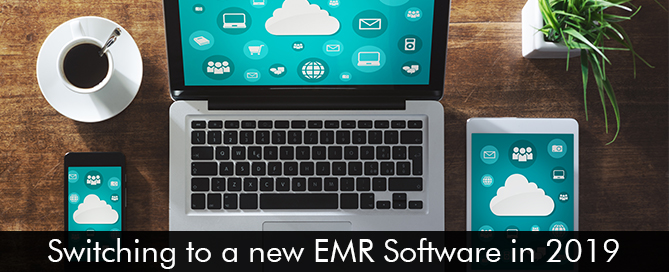Medical Practices normally shift from one Electronic Medical Records (EMR) Software to another to reduce their problems, but if this switch is not made perfectly, it can cause more problems instead. To make a clean and perfect switch, the leadership of the practice needs to be smart enough to identify all the weak spots and constraints within their practice, whether they be financial or staff related, and then take a proactive approach in dealing with them.
This can only be done after a careful assessment of all the resources available and proper allocation of these resources during the shifting of your Electronic Health Records (EHR) Software. The following points will help you make the shift smooth and reduce anomalies during the process.
Temporarily Reducing the Patient Traffic
During the first two weeks of the implementation of a new EMR/EHR or Practice Management (PM) Software, reducing the volume of Patient Scheduling can prove to be really helpful. An office traffic reduction of up to 25% initially will reduce the workload on the staff during the switching process which will help them get more comfortable with the software while having lower stress.
Reducing patient traffic in the initial weeks of the implementation of a new EHR System might make the practice lose a little on the revenues. But in the long run, it will add to the patient as well as employee satisfaction and justify all the revenue reduction since each patient will be dealt with proper attention and care, and there won’t be any compromise on the quality of care provided just because of the issues with software implementation.
Customize the Software as You Require
The switching of a new EMR System will be made much more efficient and effective if the newer EHR Software System is customized according to the workflow of the practice. An effective method of doing this would be to access all the functions of the software step-by-step and test each function with respect to its use in different departments. This step-by-step analysis will help you organize the workflow within the software and customize every tool according to your preferences.
Select the Right EMR Software
To make sure that switching from one EHR software to another solves more problems than it creates, you need to select the right EMR Software to switch to in the first place. Try choosing vendors with solid and longstanding reputations and pay close attention to all the features and tools being provided. Secondly, make sure that all the tools – say Patient Engagement or e-Prescribing (e-Rx) – provided are relevant to your practice or medical specialty and if not, try finding one with the most relevant tools.
Also, go for better tech support and customer service instead of just selecting the cheapest software since, during the shifting process, there will be a number of instances where you will need direct communication with the vendor to fix all the bugs and issues that might be occurring with the newly implemented EHR Software System.








